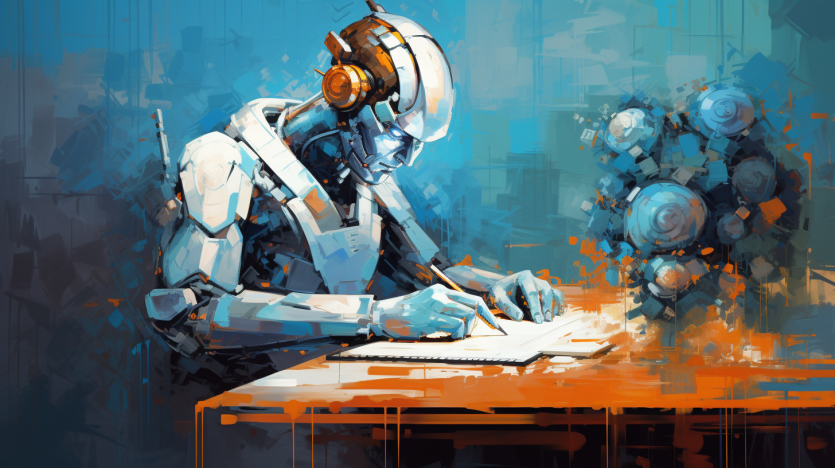PicsArt’s creative AI playbook: A vision for contextual intelligence, AI agents

Join our daily and weekly newsletters for the latest updates and exclusive content on industry-leading AI coverage. Learn More
Whether you’re an Android or iOS person, most people have heard of PicsArt. The platform launched more than a decade ago and has become one of the go-to services for all things image and video editing, with more than 150 million monthly active users.
However, it hasn’t been an easy journey for the company. Despite being an early mover in the smartphone-based editing domain, the company has seen significant competition from players like Canva and Adobe who have been playing a cat-and-mouse game for quite some time—building their own similar products. When I spoke with Artavazd Mehrabyan, the CTO of the company, at the recent WCIT conference in Armenia, he was pretty vocal about the challenges, saying it is tough to be or at least stay different for long in this market.
“A lot of things that PicsArt had before were copied into the competitors. PicsArt was the first all-in-one editing service on mobile. There was no other player before 2011. We started with this approach and it was copied, among many other things,” Mehrabyan said. He pointed out that the same is happening with AI, where competitors, including mainstream photo services, are offering very similar capabilities.
For example, PicsArt offers object generation, allowing users to use advanced AI to create required photo elements. The same capability has also been incorporated into other products in the category, creating an overlap of sorts.
However, instead of pushing to stand out by adding more tools to its existing batch of over two dozen AI capabilities, the company is looking to make a mark on users by improving the quality of what it is delivering. Specifically, Mehrabyan said, the focus is on how they are productizing and tailoring the features to help customers get to their goal – whether they want to remove a specific object from a vacation image or generate visually appealing advertisements, complete with images and copy.
Training high-quality creative AI
In the early stage, when AI was not a thing, Mehrabyan said most of PicsArt’s technology research and effort went towards making mobile-based editing seamless.
“It was very hard to get all these editing functionality working on the device offline. Then, the next challenge was to scale our ecosystem and infrastructure to support a surging user base. This took us to hybrid infrastructure. We started with multi-cloud and a data center, which, till now, continues to be the best solution as it’s more cost-efficient, highly performant and very flexible,” Mehrabyan explained.
With this tech stack in place, the company launched its first AI feature in 2016, running a bunch of small models offline on user devices. This gradually transformed into a large-scale AI effort, with the company transforming into an AI-first organization and leveraging its infra and backend services to serve larger models and APIs for more enhanced capabilities like background removal/replacement. More recently, with the generative AI wave taking shape, PicsArt started training its own creative AI models from scratch.
In the creative domain, it is very easy to lose a user. A small error here or there (leading to low-quality results) and there’s a good chance the person won’t come back again. To prevent this, PicsArt is extremely focused on the data side of things. It is selectively using data from its own network – marked by users as public and free to edit – for training the AI models.
“We have a special ‘free to edit’ license. If you are posting publicly and tagging your image – from stock photo across any category to a sticker or background – as free to edit, it allows another user of the service to reuse or work on top of it. So, in essence, the user is contributing this image to the community and PicsArt itself,” Mehrabyan said.
The license has been in place from the early days of the service and has given PicsArt a massive stock of user-generated content for training AI. However, as the CTO pointed out, not all of that is of high quality and ready to use right away. The data has to pass through multiple layers of cleansing and processing, from manual and AI-driven, to be transformed into a safe training-ready dataset.
“At the end of this, we have quite a big dataset that is proprietary to PicsArt. We don’t need to have additional data,” he said.
However, having a large volume of high-quality data in hand was just one part of the puzzle.
The real challenge for PicsArt, as Mehrabyan described, was to build the “data flywheel.” A self-reinforcing cycle covering not only data accessibility but also aspects like how to annotate data, how to use it and eventually how to leverage it as part of a continuous learning process to improve over time.
Establishing a feedback loop to achieve this was a long and complex process, he said.
“We built our own annotation technology. We internally developed all related infrastructure and ecosystem technologies, including those for identifying and classifying images, tagging them and adding different types of labels to them,” Mehrabyan said. “Then, we created a team to help refine the pipeline and give feedback over time. It’s mostly been very automatic, AI-driven with human feedback in between so that we can have continuous improvement.”
Feedback loop leads to contextual intelligence
While the human-driven feedback loop has been a critical part in improving PicsArt’s products – enhancing the quality of the outputs they generate – it is also taking the company towards what Mehrabyan calls “contextual intelligence” or the ability of the platform to understand user needs and deliver exactly what they want.
This function is particularly important for the platform’s growing base of business-focused users who are looking to get work done right on their smartphones. Whether that’s generating graphics or a full-fledged ad for a social media campaign. The platform is still mostly used by individuals looking to edit personal content, but the company says its research shows many want to take it to work, especially for marketing use cases.
“Contextual intelligence not only tracks your history or what you were doing to help you to be more productive in your journey but also predicts your next intent. It’s both reactive and proactive,” he explained.
This way, each time an individual uses the platform to create something for their work, they won’t have to define brand language and tonality. The product would already have context in place and use that to generate the required content. Mehrabyan said the company also plans to release a brand kit capability that would allow users to tweak this context to their needs and further improve the quality of generations.
Creative AI agents on the way
Eventually, Mehrabyan says contextual intelligence will lead PicsArt to an agent-based ecosystem. This is where users will have a copilot of sorts – with all relevant knowledge about their work and design preferences – to help them with their tasks.
“This copilot would understand your intent and historical context to provide interactive support and guide you to be even more productive. We see this use case as integrated within the whole PicsArt ecosystem, from the user’s perspective,” he said.
Beyond this, he also expects AI agents will help PicsArt users execute some tasks in bulk. For instance, if a user has to apply the same design or logic of design to several resources, they could use an agent to automate the workflow on their behalf.
This way, the company hopes to be a key driver in the creative industry, sitting ahead of its competitors and allowing users to grow their creativity and eventually businesses, without too much effort.
Mehrabyan noted that AI will bring about a major change but users – from businesses to designers and marketers – must try to understand how it affects them and take advantage of the changes to do more than currently possible.
“From the current point of view, it will affect negatively. But if you take perspective from a different side, like from the future, you will see that those people will leverage AI to learn a lot more. They will no longer be narrow specialists. They’ll cover broader areas deeper and faster with the help of AI,” he noted.
According to Future Markets Insights, the global AI image editor market is projected to grow from $80.3 million in 2024 to $217.9 million by 2034, with a CAGR of 10.5%. Meanwhile, AI-driven generation, which has become a core part of most image editing tools/services, including PicsArt, is estimated to grow 38% from $8.7 billion in 2024 to $60.8 billion in 2030.




Comments are closed, but trackbacks and pingbacks are open.